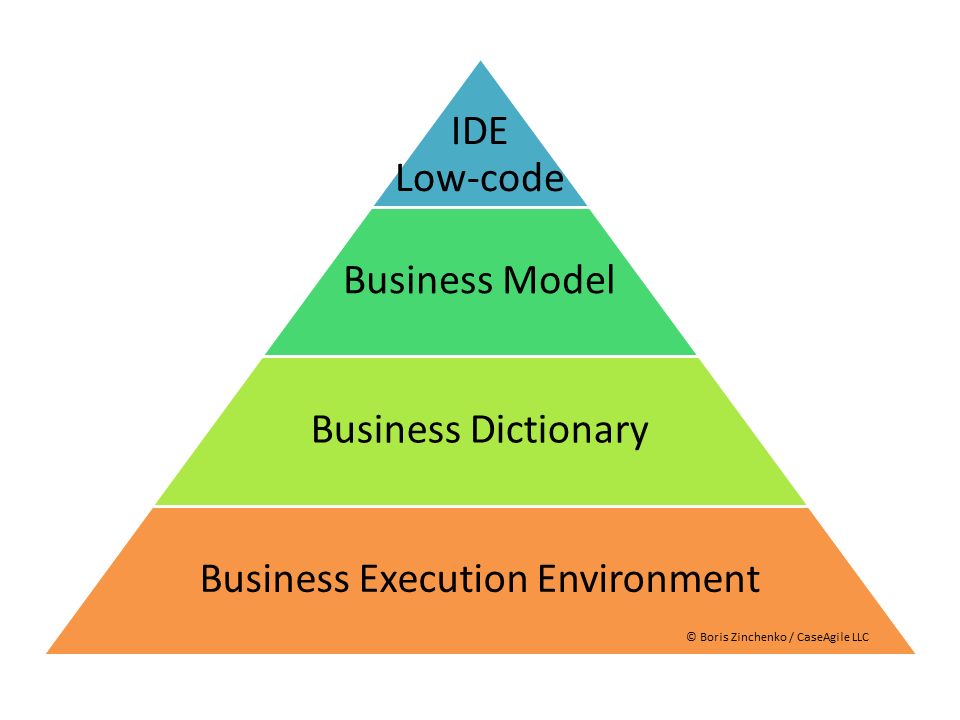Integrated development environments (in short, IDE) dominate nearly every area of modern IT. Developers cannot work productively without a graphical shell, which accelerates routine code writing and wraps common constructs. Despite common belief of business, IT is the area occupied by low-code platforms.
Why these low code platforms of IT are not recognized as such in business? Because all of them encapsulate and expose technical details not suitable on business level. This creates false impression of them as high-code platforms. Ironically, exactly business level remains a virgin land of high-code debris little touched by overall code reduction. It happens exactly due to insufficient modeling. Low-code platforms do not appear out of nowhere. Instead, they arise as a generalization of established models and vocabulary in their subject area.
Dynamics and versatility of business scenarios complicates creation of such universal models and vocabulary commonly accepted by entire business community. Exactly this circumstance is a key factor impeding successful adoption of low-code solutions in business. Thorough business modeling and accumulation of universally recognized dictionary of standard primitives is the ultimate foundation of any successful implementation of low-code platform in business.
Low-code platform without carefully tailored library of components encapsulating low-level logic and drill down sequence of nested models is not a blessing but a hollow nightmare only suitable to destroy a business. Successful low-code platform can only appear as a natural result of low-level scrupulous business modeling, not as its starting point.


Leave A Comment